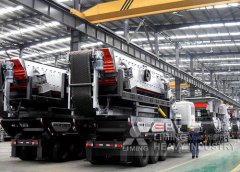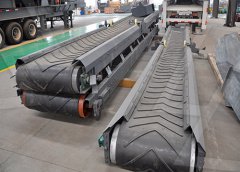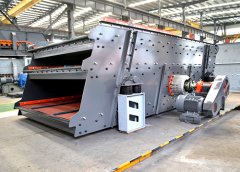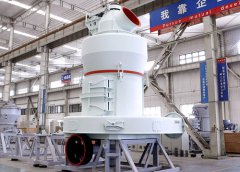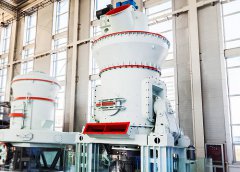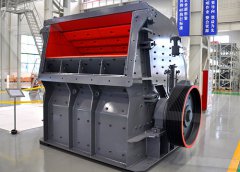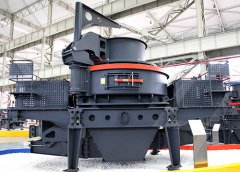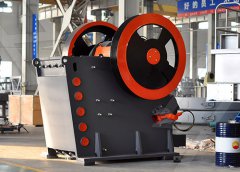
Mechanism of arsenic distribution and migration during iron
In this study, a combined reforming and reduction smelting of copper slag-steel slag was proposed to recover iron (Fe) from solid waste while lowering the Slag is the by-product of iron- and steelmaking processes. Normally, around half to one tonne of slag would be generated for yielding one tonne of rolled iron The potential utilization of slag generated from iron- and
احصل على السعر
Implications of Direct Use of Slag from Ironmaking
The thermochemical and electrical behavior of ironmaking slag produced from titanomagnetite concentrates has been assessed in the vicinity of its tapping In the production of copper from sulfide ore, slag accumulates at the processing plant. In the present work, the phase transformations that occur in such slag Extraction of iron from copper-plant slag SpringerLink
احصل على السعر
Removal of Arsenic During Iron Extraction from Waste
Owing to the excessively high arsenic content present in iron extracted from copper smelting slag, we propose a new arsenic removal process in this paper. The Abstract. In this study, a combined reforming and reduction smelting of copper slag-steel slag was proposed to recover iron (Fe) from solid waste while Mechanism of arsenic distribution and migration during iron
احصل على السعر
Extraction of Iron from Copper-Plant Slag Springer
In the indirect reduction of slag at temperatures above its melting point, metallic iron is mainly concentrated at the outer surface of the prod- uct, forming large inclusions that At present, the mainstream iron recovery processes from copper slag mainly include the hydrometallurgy route,smelting iron alloy,and direct reduction (DR) Minerals Free Full-Text Recovery of Iron from Copper Slag
احصل على السعر
During extraction of iron slag produced is? TipsFolder
In iron extraction, how does slag form? The cast iron reacts with carbon to produce pure iron and carbon monoxide gas, which escapes. As flux, limestone is added, which creates the slag. Impurities like S and Si enter the slag, which can be easily separated later to yield pure iron. During iron extraction, which of the following slags is produced?Blast furnace slag is a calcium-silicate-based product removed from the top of molten iron during its extraction from ore in a blast furnace. Usually, it is rapidly cooled to a glassy state and ground for use in construction materials ( Provis et al., 2015 ).Blast Furnace Slag an overview ScienceDirect Topics
احصل على السعر
Iron Extraction by Blast Furnace Metallurgy Vedantu
In this reduction reaction, oxygen is removed from the iron (III) oxide to leave behind iron. Generally, the extraction of metals and their isolation are based on three major procedures. The steps are: 1. Concentration of Ore. 2. Extraction of metal from concentrated ore and. 3. Purification of the metal.Blast furnace slag is a nonmetallic coproduct produced in the process. It consists primarily of silicates, aluminosilicates, and calcium-alumina-silicates. The molten slag, which absorbs much of the sulfur from the charge, comprises about 20 percent by mass of iron production.Which slag is produced during extraction of iron? TimesMojo
احصل على السعر
Slag
During the process of smelting iron, ferrous slag is created, but dominated by calcium and silicon compositions. Through this process, ferrous slag can be broken down into blast furnace slag (produced from iron oxides of molten iron), then steel slag (forms when steel scrap and molten iron combined).Malleable Iron is the purest form of iron available commercially and is prepared from cast iron by heating cast iron in a furnace lined with Haematite (Fe2O3). The Haematite then reacts with Carbon in the cast iron to give pure iron and carbon monoxide gas. Fe 2 O 3 +3C→2Fe+3CO. Limestone then creates the slag.Extraction of Iron: Meaning, Purification, & Extraction Methods
احصل على السعر
4.1.6.3.1: Iron Production Chemistry LibreTexts
4.1.6.3.1: Iron Production. 4.1.6.3: The Extraction of Iron. 4.1.6.4: The Extraction of Silver. The production of iron from its ore involves an oxidation-reduction reaction carried out in a blast furnace. Iron ore is usually a mixture of iron and vast quantities of impurities such as sand and clay referred to as gangue.Mild steel. Mild steel is iron containing up to about 0.25% of carbon. The presence of the carbon makes the steel stronger and harder than pure iron. The higher the percentage of carbon, the harder the steel becomes. Mild steel is used for lots of things nails, wire, car bodies, ship building, girders and bridges amongst others.iron and steel chemguide
احصل على السعر
23.2: Pyrometallurgy Chemistry LibreTexts
23.2: Pyrometallurgy. It is possible to isolate many of the representative metals by chemical reduction using other elements as reducing agents. In general, chemical reduction is much less expensive than electrolysis, and for this reason, chemical reduction is the method of choice for the isolation of these elements.For this it is necessary a characterization of the slag as the proportion of iron oxides to study the feasibility of extraction and reuse. For this work siderurgy slag was collected in the steel(PDF) Study of Siderurgy Slags for the Reuse of Iron Oxides for
احصل على السعر
Slag Formation during Reduction of Iron Oxide Using Hydrogen
The aim of this work was to study the slag formation during the reduction process and the reduction behaviour of iron oxides. Furthermore the reduction behaviour of iron ore during continuous feeding was assessed. Mixtures of iron ore and calcined lime with a basicity of 0, 0.8, 1.6, 2.3, and 2.9 were melted and reduced by hydrogen.The slag produced at blast furnace during pig iron manufacturing is called blast furnace slag. The slag produced at steel melting shop is known as steel slag. Slag output obtained during pig iron and steel production is variable and depends mainly on composition of raw materials and type of furnace. Typically, for ore feed containing 60 to 65%SLAG IRON AND STEEL IBM
احصل على السعر
The slag formed in the extraction of iron and copper respectively
In extraction of copper, concentrated sulphide ore containing iron as an impurity is mixed with silica and heated in a reverberatory furnace. During this process, most of the iron sulphide is converted into its oxide, which further reacts with silica to form a fusible slag of iron silicate. SiO2 + F eO → F eSiO3.Granulated iron silicate slag, a by-product of pyrometallurgical copper extraction, has excellent properties for construction applications. Slag modification with CaO enhances the application properties regarding pozzolanic reactivity, potentially extending slag use in the future. The slags’ short-term leaching behavior has already Long-Term Leaching Effects on CaO-Modified Iron Silicate Slag
احصل على السعر
Principles of extraction of iron and its occurrences Unacademy
It is made by heating cast iron in a furnace lined with Hematite ( Fe2O3 ), which reacts with carbon in cast iron to produce pure iron and carbon monoxide gas, both of which escape. It is another method of extraction of iron. Fe2O3 + C → 2Fe + 3CO. Limestone is then added to it as flux, which results in slag formation.Abstract. In this study, hydrometallurgical processes involving pressure acid leaching and solvent extraction were developed to aid recovery of indium from zinc slag, which is produced in the imperial smelting process. Four different acid leaching methods were studied, namely atmospheric leaching, atmospheric leaching with KMnO 4, roastingRecovery of Indium from Hard Zinc Slag by Pressure Leaching and
احصل على السعر
Effects of pH and metal composition on selective extraction of
extraction process using slag Slag type Particle size Ca content Reaction temp. S/L ratio Reaction time Solvent Ca extraction Impurity ion extraction Ref. Steel slag 50 74 m m CaO 44.9% (XRF) Room temperature 20 g L 1 60 min 1 M NH 4 Cl 96% — 23 Steelmaking slag — 15.42% (EDS) 45 C 100 g L 1 30 min 2 M NH 4 S: 607.3 mg LCl 76% Mg: 255The remaining oxides are proportionally concentrated in the slag, including the titania, resulting in slag typically containing > 80% TiO 2, but ranging from about 75–85% TiO 2.18 The slag composition is dependent on the starting concentrations of the various oxides in the feedstock, the degree of iron reduction and the contribution of Evaluation of Titania-Rich Slag Produced from Titaniferous
احصل على السعر
Comprehensive recovery of zinc, iron and copper from copper slag
In this study, a novel method to recover copper, zinc and iron from copper slag by SO 2 –O 2 roasting-leaching-magnetic separation was proposed. The effect of roasting experiment conditions were roasting temperature of 900 °C, holding time of 120 min, and φ SO2 (The volume fraction of SO 2 in the mixed gas of SO 2 and O 2) of Slag, a byproduct of metallurgical smelting processes, is a mixture of metal oxides, silicon dioxide, and different compounds [1,2,3,4,5].It is produced from raw ore combustion or the extraction of specific minerals from smelting materials [1,5].Huge quantities of slags (1868.8 million tonnes of global steel production in 2019–2020) are Recycled Smelter Slags for In Situ and Ex Situ Water and MDPI
احصل على السعر
